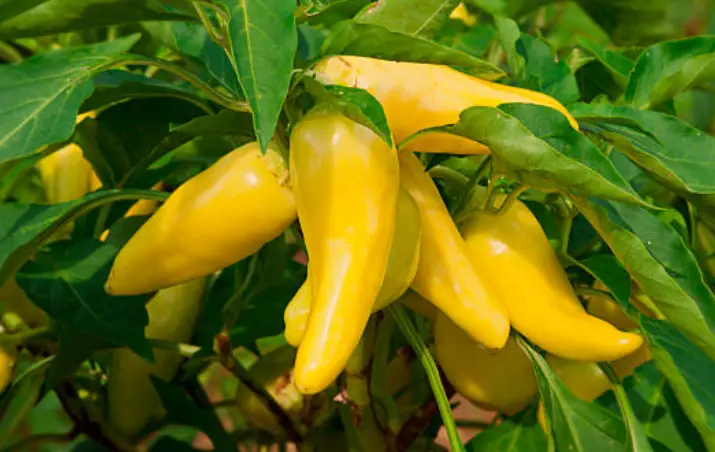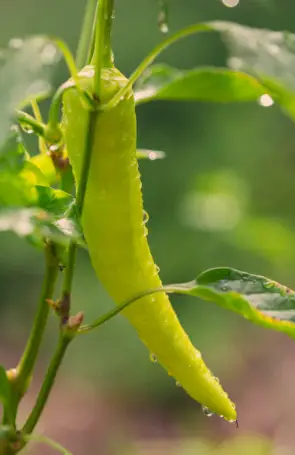If you’re a chili pepper lover, you’ve probably come across Hungarian wax peppers and banana peppers at your local grocery store or farmer’s market. These two pepper varieties may look similar at first glance, but they offer distinct flavors, heat levels, and uses in the kitchen.
We will go deeply into the world of Hungarian wax peppers and banana peppers in this extensive guide, examining their traits, origins, and culinary uses.
Origins and History
Hungarian Wax Peppers:
As the name suggests, Hungarian wax peppers have their roots in Hungary, where they have been cultivated for centuries. These peppers were brought to Hungary by the Turks during their occupation in the 16th century, and they quickly became a staple in Hungarian cuisine. The “wax” in their name refers to the waxy, shiny appearance of the ripe peppers, which can range in color from yellow to orange to red.
Banana Peppers:
Despite their name, banana peppers do not originate from banana-growing regions. Instead, they are believed to have been first cultivated in Hungary or the neighboring Balkan regions. The moniker “banana” likely comes from their elongated, slightly curved shape, which resembles a small banana. Banana peppers were later introduced to the Americas, where they gained widespread popularity, particularly in the United States.
Appearance and Characteristics
Hungarian Wax Peppers:

Hungarian wax peppers are relatively small, averaging between 4 and 6 inches in length and 1 and 2 inches in width. They have a distinctive conical shape and a waxy, glossy skin that can range in color from pale yellow to bright red, depending on the stage of ripeness. Unripe Hungarian wax peppers are typically yellowish-green, while fully ripe ones turn a vibrant red hue.
Banana Peppers:

Hungarian Wax Peppers vs Banana Peppers
As their name implies, banana peppers are elongated and curved, resembling a small banana in shape. They typically measure between 4 and 8 inches in length and have slightly wrinkled, yellow-green skin when unripe. As they mature, banana peppers turn a rich yellow or golden-orange color. Their flesh is thick and crunchy, with a slightly hollow interior.
Heat Levels and Flavor Profiles
Hungarian Wax Peppers:
Hungarian wax peppers are known for their moderate heat level, ranging from 5,000 to 10,000 Scoville Heat Units (SHU) on the Scoville scale, which measures the pungency of chili peppers. This places them in the mild to medium heat range, making them suitable for those who enjoy a little kick without overwhelming heat. In terms of flavor, Hungarian wax peppers have a slightly fruity and tangy taste, with a subtle sweetness that emerges as they ripen.
Banana Peppers:
In contrast, banana peppers are generally considered mild, with a heat level ranging from 0 to 500 SHU on the Scoville scale. This makes them an excellent choice for those who prefer a milder pepper experience. Banana peppers have a distinct, slightly tangy flavor with a hint of sweetness, which becomes more pronounced as they ripen. Their crunchy texture adds a nice contrast to dishes.
Culinary Uses and Recipes
Hungarian Wax Peppers:
Hungarian wax peppers are incredibly versatile and can be used in a variety of dishes, both raw and cooked. They are commonly found in Hungarian goulash, stews, and paprikash dishes, where they add a touch of heat and vibrant color. Hungarian wax peppers can also be pickled, roasted, or stuffed with various fillings, such as rice, meat, or cheese.

Some popular recipes featuring Hungarian wax peppers include:
- Hungarian Wax Pepper Relish
- Roasted Hungarian Wax Pepper Salad
- Hungarian Wax Pepper and Feta Frittata
- Hungarian Wax Pepper and Chicken Paprikash
Banana Peppers:
Banana peppers are a staple in many American cuisines, particularly in sandwiches, salads, and pizza toppings. Their mild heat and crunchy texture make them a popular choice for adding a touch of flavor without overwhelming heat. Banana peppers can also be pickled, roasted, or stuffed with various fillings, similar to Hungarian wax peppers.

Banana Peppers:
Here are some delicious recipes featuring banana peppers:
- Banana Pepper Rings (fried or baked)
- Banana Pepper and Cheddar Stuffed Burgers
- Banana Pepper and Onion Relish
- Banana Pepper and Bacon Pizza
- Pickled Banana Peppers
Growing and Cultivation
Both Hungarian wax peppers and banana peppers are relatively easy to grow, making them popular choices for home gardeners and small-scale farmers.
Hungarian Wax Peppers:
Hungarian wax peppers thrive in warm, sunny conditions and well-draining soil. They can be grown from seeds or transplants and typically mature within 60 to 90 days, depending on the variety. These peppers require consistent watering and benefit from a balanced fertilizer to promote healthy growth and abundant yields.
Banana Peppers:
Banana peppers are also well-suited for home gardens and can be grown in a similar manner to Hungarian wax peppers. They prefer full sun exposure and well-draining soil rich in organic matter. Banana peppers are generally prolific producers and can yield a continuous supply of peppers throughout the growing season with proper care and maintenance.
Nutritional Value and Health Benefits
Both Hungarian wax peppers and banana peppers offer valuable nutrients and potential health benefits, making them excellent additions to a balanced diet.
Hungarian Wax Peppers:
Hungarian wax peppers are an excellent source of vitamin C, providing over 100% of the recommended daily intake in a single serving. They also contain decent amounts of vitamin A, vitamin B6, and potassium. Additionally, Hungarian wax peppers are rich in antioxidants, such as capsaicin and carotenoids, which may offer anti-inflammatory and cancer-preventive properties.
Banana Peppers:
While milder in heat, banana peppers are also nutritious. They are a good source of vitamins A, C, and K, as well as dietary fiber and various antioxidants. Banana peppers contain small amounts of capsaicin, which may contribute to their potential health benefits, including improved metabolism and reduced risk of certain chronic diseases.
Preserving and Storage
To enjoy the flavors of Hungarian wax peppers and banana peppers year-round, proper storage and preservation methods are essential.
Hungarian Wax Peppers:
Fresh Hungarian wax peppers can be stored in the refrigerator for up to a week. For longer-term storage, they can be frozen, pickled, or dried. Freezing is a convenient way to preserve their flavor and texture, while pickling and drying allow for extended shelf life and unique flavor profiles.
Banana Peppers:
Similarly, fresh banana peppers can be refrigerated for up to a week. For longer storage, they can be frozen, pickled, or dehydrated. Pickled banana peppers are a popular condiment, adding a tangy and slightly sweet flavor to sandwiches, burgers, and other dishes.
Conclusion
Whether you’re a seasoned chili pepper enthusiast or simply looking to add some zest to your meals, Hungarian wax peppers and banana peppers offer distinct flavors and versatility in the kitchen. Hungarian wax peppers provide a moderate kick and a tangy, fruity taste, making them ideal for dishes that require a touch of heat. On the other hand, banana peppers offer a milder flavor profile with a satisfying crunch, perfect for adding a subtle kick to sandwiches, pizzas, and salads.
Both peppers are relatively easy to grow, nutritious, and can be preserved in various ways, ensuring a year-round supply of these flavorful ingredients. So, the next time you’re at the grocery store or farmer’s market, don’t hesitate to pick up a few Hungarian wax peppers and banana peppers and explore the unique flavors they can bring to your culinary creations.



